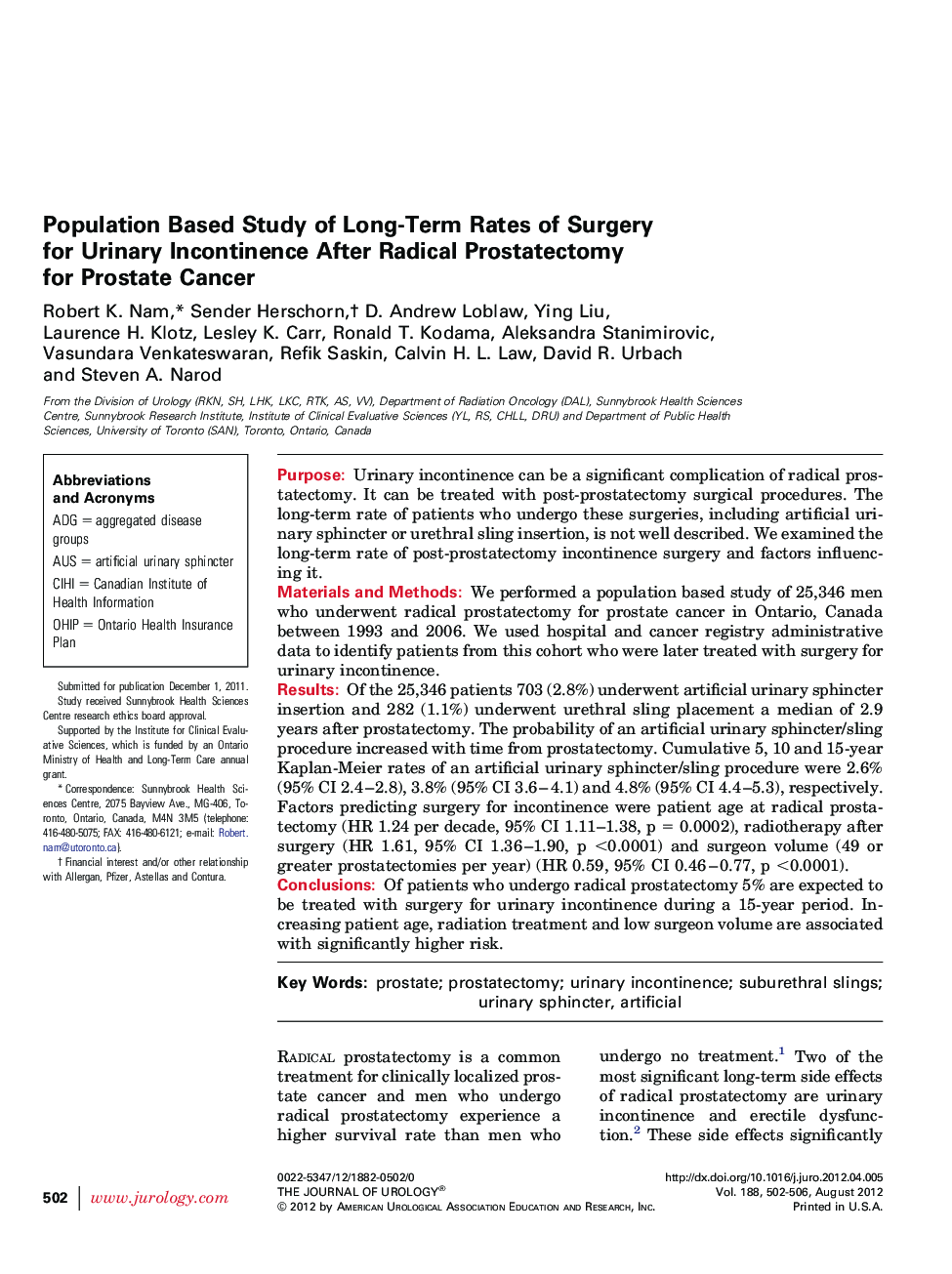| کد مقاله | کد نشریه | سال انتشار | مقاله انگلیسی | نسخه تمام متن |
|---|---|---|---|---|
| 3867110 | 1598932 | 2012 | 5 صفحه PDF | دانلود رایگان |

PurposeUrinary incontinence can be a significant complication of radical prostatectomy. It can be treated with post-prostatectomy surgical procedures. The long-term rate of patients who undergo these surgeries, including artificial urinary sphincter or urethral sling insertion, is not well described. We examined the long-term rate of post-prostatectomy incontinence surgery and factors influencing it.Materials and MethodsWe performed a population based study of 25,346 men who underwent radical prostatectomy for prostate cancer in Ontario, Canada between 1993 and 2006. We used hospital and cancer registry administrative data to identify patients from this cohort who were later treated with surgery for urinary incontinence.ResultsOf the 25,346 patients 703 (2.8%) underwent artificial urinary sphincter insertion and 282 (1.1%) underwent urethral sling placement a median of 2.9 years after prostatectomy. The probability of an artificial urinary sphincter/sling procedure increased with time from prostatectomy. Cumulative 5, 10 and 15-year Kaplan-Meier rates of an artificial urinary sphincter/sling procedure were 2.6% (95% CI 2.4–2.8), 3.8% (95% CI 3.6–4.1) and 4.8% (95% CI 4.4–5.3), respectively. Factors predicting surgery for incontinence were patient age at radical prostatectomy (HR 1.24 per decade, 95% CI 1.11–1.38, p = 0.0002), radiotherapy after surgery (HR 1.61, 95% CI 1.36–1.90, p <0.0001) and surgeon volume (49 or greater prostatectomies per year) (HR 0.59, 95% CI 0.46–0.77, p <0.0001).ConclusionsOf patients who undergo radical prostatectomy 5% are expected to be treated with surgery for urinary incontinence during a 15-year period. Increasing patient age, radiation treatment and low surgeon volume are associated with significantly higher risk.
Journal: The Journal of Urology - Volume 188, Issue 2, August 2012, Pages 502–506